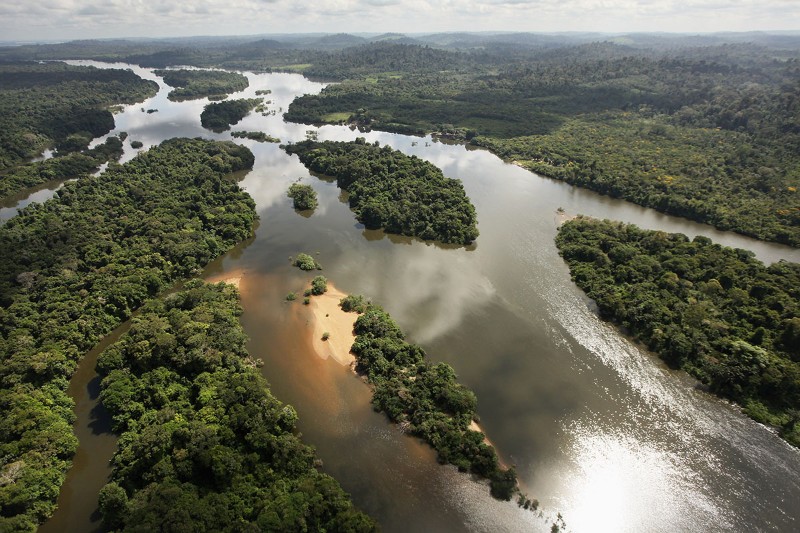Such tales were long dismissed as fantasies, not least because teeming cities were never seen or talked about again. But it now seems the chroniclers were right all along. It is our modern vision of a pristine rainforest wilderness that turns out to be the dream.
What is today one of the largest tracts of rainforest in the world was, until little more than 500 years ago, a landscape dominated by human activity, according to a review of the evidence by Charles Clement of Brazil's National Institute of Amazonian Research in Manaus, and his colleagues.
After Europeans showed up, the inhabitants were decimated by disease and superior weaponry, and retreated into the bush, while the jungle reclaimed their fields and plazas. But, thanks to a combination of deforestation and remote sensing, what's left of their civilisation is now re-emerging.
They reveal an anthropogenically modified Amazonia before the European conquest. "Few if any pristine landscapes remained in 1492," says Clement. "Many present Amazon forests, while seemingly natural, are domesticated."
Amazon domesticity
The evidence for this radical rethink has been stacking up for some time. Archaeologists have uncovered dense urban centres that would have been home to up to 10,000 inhabitants along riverbanks, with fields and cultivated orchards of Brazil nuts, palm and fruit trees stretching for tens of kilometres. Remote sensing has revealed extensive earthworks, including cities, causeways, canals, graveyards and huge areas of ridged fields that kept crops like manioc, maize and squash clear of floods and frosts.
Meanwhile, agriculturalists have discovered that many forest soils have been mulched and composted with waste. These fertile "dark earths", or terra preta, may cover 150,000 square kilometres, much of it now reclaimed by rainforests. Before the arrival of Europeans, the region's population may have reached 50 million.
The remains date back 3000 years or more, say the authors, who include geographer William Denevan of the University of Wisconsin-Madison, and anthropologist Michael Heckenberger of the University of Florida at Gainesville - both pioneers of the idea that the Amazon has long been modified by humans.
Not everyone agrees. Dolores Piperno of the Smithsonian Tropical Research Institute in Panama recently argued that "recent investigations of soils in parts of the western Amazon... found little vegetation disturbance."
Comment: The Smithsonian is notorious for covering up true history.
Clement and his co-authors agree that "the idea of a domesticated Amazonia... contrasts strongly with reports of empty forests, which continue to captivate scientific and popular media".
But the idea of a domesticated Amazon complements research in other rainforest regions, including the Congo basin and South-East Asia, that also suggest that much of what seems pristine is actually regrowth after dense human occupation. Erle Ellis of the University of Maryland, Baltimore, says such evidence suggests that we should be dating the start of the Anthropocene - the era of human domination of the planet - to thousands of years ago rather than in the middle of 20th century.
Journal reference: Proceedings of the Royal Society B, DOI: 10.1098/rspb.2015.0813




535 AD D Keys Catastrophe felt even here in the new world.
[Link]